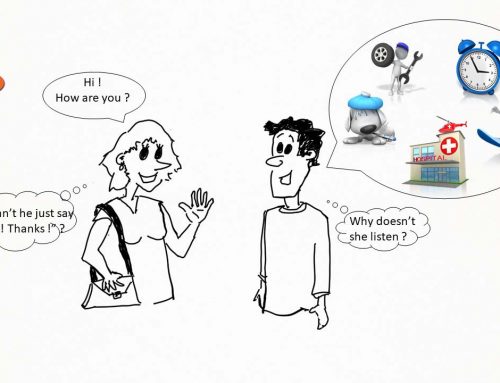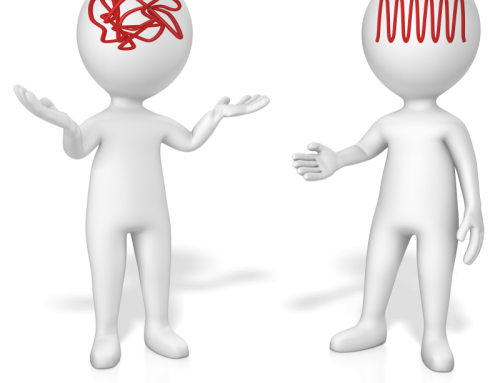3 golden rules to retain great employees
On a regular basis we hear in the news how vacancies are difficult to be filled. Employees are easily lured away by competitors with better conditions. Only recently a Belgian company offered a recruitment bonus to the right candidate. It is now more than ever important to keep good staff in your company. But how?
Loss of expertise
In the context of human resources we talk about retention which literally means holding on to staff. Large organisations have a retention policy to retain talented employees within the company. The reasons are the high cost of recruiting someone new and the time investment to train new employees into the job. With every experienced employee leaving the company, valuable expertise walks out of the door. And this is a big loss in many ways.
Gone are the times when the boss or HR manager only had to open a drawer to go through the stack of CV’s of job applicants. This is why today it’s not such a crazy idea for any company -small and large- to have a retention policy.
Increase employee engagement
How do you do that? Employees feeling a strong sense of commitment to their workplace are less inclined to leave a company. Why would someone run the risk of exploring new horizons if they are very satisfied with their work and their employer? Managers and leaders play an important role in the way people feel engaged at work.
One important rule to keep employees motivated is the following:
Stop demotivating people!
People don’t leave a company, they leave their boss. This sounds a bit like a cliché in the meantime but there is still truth in it. A study by Gallup (1) shows that 70% of the difference in employee engagement lies with the direct manager and 30% with employees and other factors. The relationship between managers and employees is very important for employee engagement.
Some sources of demotivation are micro management, too much control by the manager, withholding information, ambiguity, whimsical behaviour from management, a hidden agenda and poor communication.
The 3 golden rules to engage people
1. Give autonomy
Employees doing primarily cognitive work requiring them to work solution focused are more likely to be motivated by having autonomy in deciding how to reach the goal. They have a clear objective and can autonomously decide what the most effective way is to achieve it. The video clip about Drive from Dan Pink (3) below tells you more about it.
Will people perform better if they are financially rewarded related to achieved results? Dan Pink refers to a study around reward or punishment in relation to achievements. Financial reward is a form of extrinsic motivation, a motivation from outside the individual. Dan Pink talks about the typical carrot and a stick approach (4) maintained by organisations in the way of giving bonuses, incentives, salary increases.

But it seems that people doing mainly cognitive, non-routine work are motivated more by autonomy or self-determination. It’s the self-governance to decide for themselves how they can best achieve the objective. Autonomy is a form of intrinsic motivation. It originates from within the individual and is much stronger than extrinsic. The other two forms of intrinsic motivation highlighted in the video clip and in the book are Mastery or getting better at something and Purpose or having a higher goal.
In terms of repetitive mechanical work, extrinsic motivation will have more impact. Yet is also very important here that employees know exactly how they contribute to the organisation’s goal and results.
2. A sense of belonging
People are social beings and have a need to belong and feel connected to their work and work environment. This is why it’s so important to value every employee -whether maintenance staff or senior management- for their role within the organisation. Make everyone understand clearly how they contribute to the purpose of the organisation.
Neuroscience has acquired interesting insights (2) about this in the last decades. Social pain such as being excluded from a group or feeling rejected is very similar to physical pain. The brain processes both social and physical pain using the same network. A study (2) has shown that “social exclusion can be just as detrimental to our welfare as physical harm”.
A useful exercise for a manager could be to think about who amongst your staff is in your “ingroup” or “outgroup” (2). The ingroup are the people you probably choose to spend a bit more time with. The outgroup are the ones you prefer to spend as little time with as possible. What’s the impact?

3. Instilling trust and encourage open communication
Create a corporate culture in which daily feedback and recognition are the norm. This requires open and transparent communication. Nothing is so mentally and emotionally draining as ulterior communication, secret agendas and the psychological undercurrent in communication. This can be noticed especially when what someone says does not match with the way he or she says it. Something feels wrong. And this is undermining trust and cooperation. It gives way to playing games to the detriment of a good atmosphere at work.

Do you want to know more about leadership, communication and authenticity?
Yes please, send me free leadership tips.
Yes please, I would like to know more about Start2BU-workshops.
(1)Gallup 2013: State of the Global Workplace Report
(2)“Neuroscience for Organizational Change”, Hilary Scarlett, 2016, p62, p63
(3)”Drive”, Daniel H. Pink, 2009
(4)carrot and a stick approach = de metaphor for reward and punishment to induce a desired behaviour.






